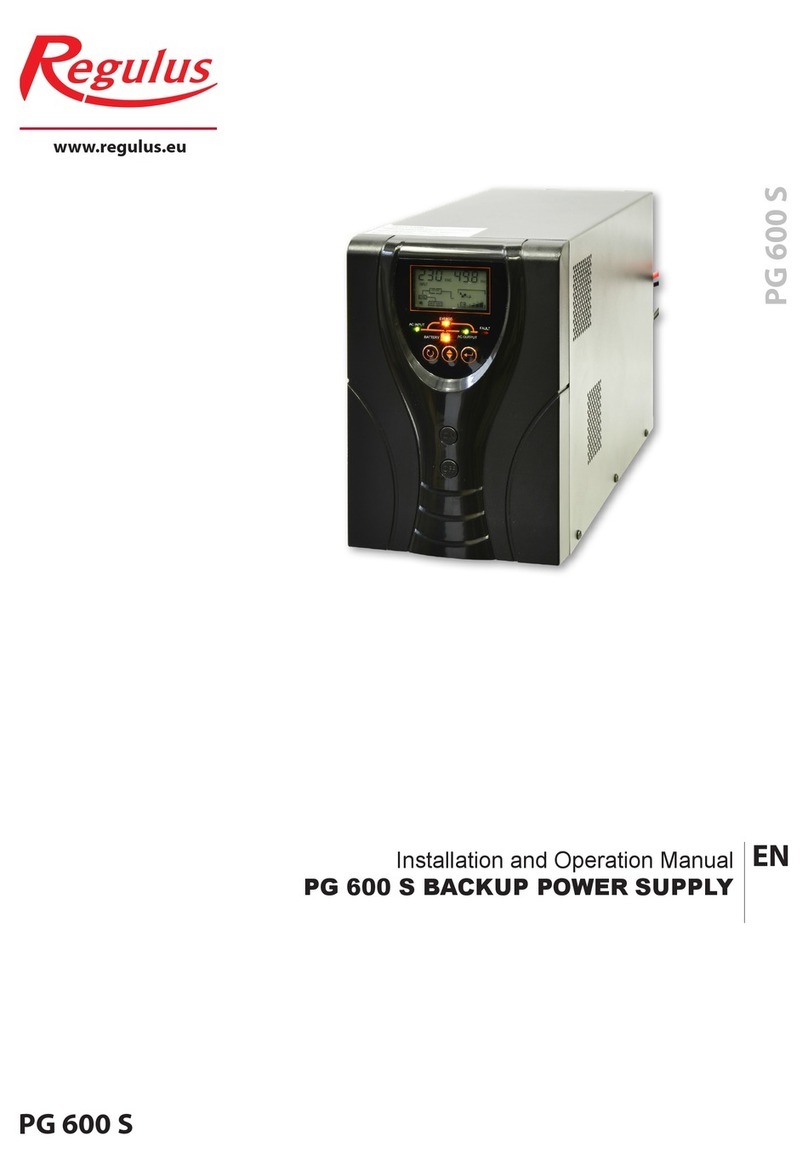
1. Introduction
RegulusRGMAT E W6 Load Unit makes boiler installation quicker as it contains all components needed
for boiler circuit circulation and for boiler protection against low-temperature corrosion. It is designed to
be installed directly on a boiler return piping. The distance of pipe axis from a wall shall be at least 100
mm to enable insulation removal if needed. This Load Unit is intended for hydronic fireplaces and
solid-fuel boilers.
2. Description of the Load Unit
RGMAT E W6 keeps the temperature in a hydraulic boiler circuit above the flue gas condensation
temperatures, which prevents so called low-temperature corrosion of the boiler combustion chamber.
This limits condensation and boiler tarring significantly, the efficiency of fuel combustion increases and
service life of the boiler is extended.
Main Features
Function maintaining a minimum inlet temperature into a boiler (fireplace)
through a load valve
Application Load Unit for solid-fuel boilers and fireplaces; it prevents
low-temperature corrosion and boiler (fire) fouling
Description consists of Wilo PARA SC 25/6 pump, TSV3B valve (with
automatic by-pass balancing), thermometer and insulation
Working fluid water; water/glycol mixture (max. 1:1) or water-glycerine
mixture (max. 2:1)
Installation on return pipe, min. pipe centre distance from wall is 100 mm
Code Max. boiler output
18668 for opening temperature 45 °C 45 kW at ΔT 20 K
18680 for opening temperature 50 °C 42 kW at ΔT 20 K
18612 for opening temperature 55 °C 36 kW at ΔT 20 K
18681 for opening temperature 60 °C 32 kW at ΔT 20 K
18682 for opening temperature 65 °C 25 kW at ΔT 20 K
18683 for opening temperature 70 °C 22 kW at ΔT 20 K
Data for RGMAT E W6 Load Unit
Fluid working temperature 5 - 95 °C
Max. working pressure 6 bar
Min. working pressure 0.5 bar
Ambient temperature 5 - 40 °C
Max. rel. humidity 80% non condensing
Insulation material EPP RG 60 g/l
Overall dimensions 325 x 140 x 155 mm
Total weight 3.1 kg
Connections 3x G 1" F
Accessories
Bypass with non-return valve code 16126






























